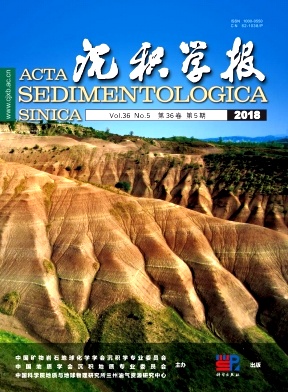Pore Structure Characteristics and Control Factors of Carbonate Reservoirs: The Cretaceous Mishrif Formation, Halfaya oilfield, Iraq
doi: 10.14027/j.issn.1000-0550.2018.078
- Received Date: 2017-08-24
- Rev Recd Date: 2017-11-09
- Publish Date: 2018-10-10
-
Key words:
- Halfaya oilfield /
- carbonate reservoirs /
- pore structure /
- control factors /
- eogenetic karstification /
- karstic rock
Abstract: The classification of reservoir pore configurations and differential genesis for the Cretaceous Mishrif formation in the Halfaya oilfield, Iraq, restrains as one of the key question for reservoir evaluation. The pores and throats are studied by cores, cast thin sections, scanning electron microscopy, routine physical properties and mercury analysis, to define the types and criteria of pore configuration. The pore configuration are divided into six types: (a) thin throat with low-middle porosity and ultra-low permeability; (b) thin throat with low-middle porosity and low permeability; (C) middle-thin throat with high-middle porosity and low-middle permeability;(d) thin throat with high porosity and low-middle permeability; (e) thin throat with high-middle porosity and low-middle permeability; (f) medium throat with high-middle porosity and low-middle permeability. Five shapes (from I to V) of capillary pressure curves are also divided. The research area is located in an open platform facies with eight types of rocks deposited, including micrite limestone, bioclastic wackestone, bioclastic packstone, intraclast bioclastic packstone, bioclastic grainstone, intraclast bioclastic grainstone, shell floatstone and karstic rock, respectively. Besides, the karstic rock is a special network structure. It is comprehensively suggested that the Mishrif reservoir in Halfaya was mainly affected by eogenetic karstification obviously controlled by facies. So the eogenetic karstification is the key factor controlling the diversity of pore configuration and further improving the reservoir quality greatly.
| Citation: | JIN ZhiMin, TAN XiuCheng, GUO Rui, ZHAO LiMin, ZHONG Yuan, CHEN YanTao. Pore Structure Characteristics and Control Factors of Carbonate Reservoirs: The Cretaceous Mishrif Formation, Halfaya oilfield, Iraq[J]. Acta Sedimentologica Sinica, 2018, 36(5): 981-994. doi: 10.14027/j.issn.1000-0550.2018.078 |






 DownLoad:
DownLoad: